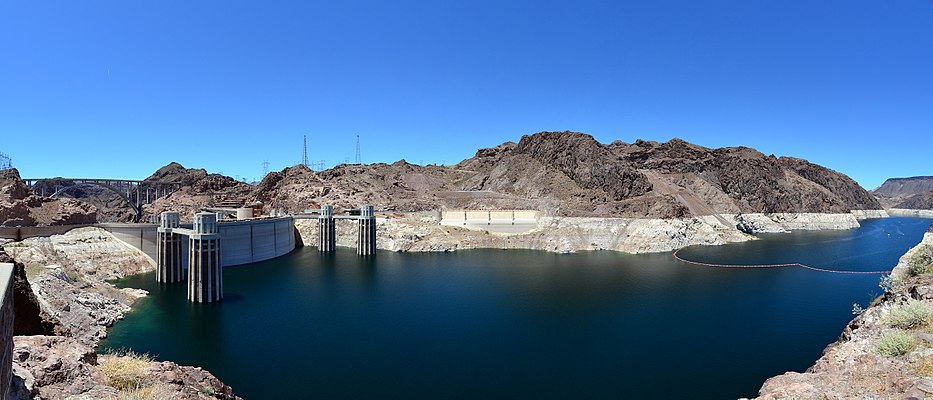In 1932, the construction began. First, the water had to be diverted from the dam site. Tunnels were drilled through the canyon wall, then lined with concrete. A second dam was built above the tunnel outlets to keep water from backing into the site. Next, they dug 135 feet below the river level to bedrock for the dams foundation. Two million cubic yards of material was removed. 12 miles upstream, in Arizona, material for the concrete was taken from a stream bed deposit. The material was processed nearby and met rigid standards for the 4.5 million cubic yards of concrete needed to build the dam. Crews worked day and night all year to pour the concrete into place in an interlocking pattern using cable ways. Steel pipes were specially ordered to fit together and put inside of the canyon walls. The power plant maintenance plant was also built. Two spillways were set against the canyon walls just above the dam, each capable of intercepting 200,000 cubic feet of water per second. This ensures that no water will ever topple over the dam. The water flowing over the basin goes into spillway tunnels to enter the river below the dam. The full height of the dam is 726 feet, which is an unprecedented size, especially at the time. In 1935, the concrete was finished and the generators were installed. One generator was working by 1936 to power Los Angeles. In 1961, the last generator was completed to serve Nevada.
The falling water from the reservoir spins and powers the turbines controlled by butterfly valves, which permits water to flow to the wheel. The hydroelectric plant generates 1.3 million KW, which helped to pay for the construction of the dam. The reservoir created by the Hoover Dam is called Lake Mead, which provides water for the three lower basin states, as well as recreation.
The Hoover Dam has a large environmental impact on the Colorado River. Before the construction of the dam, the Colorado River experienced frequent natural flooding, which brought nutrients to the floodplain and provided habitat for native plants and animals. The Colorado River delta has also become much more saline as a result of the Hoover Dam. The dam has devastated the populations of native fish in the river downstream from the dam, which has a major impact on the local biodiversity.

No comments:
Post a Comment